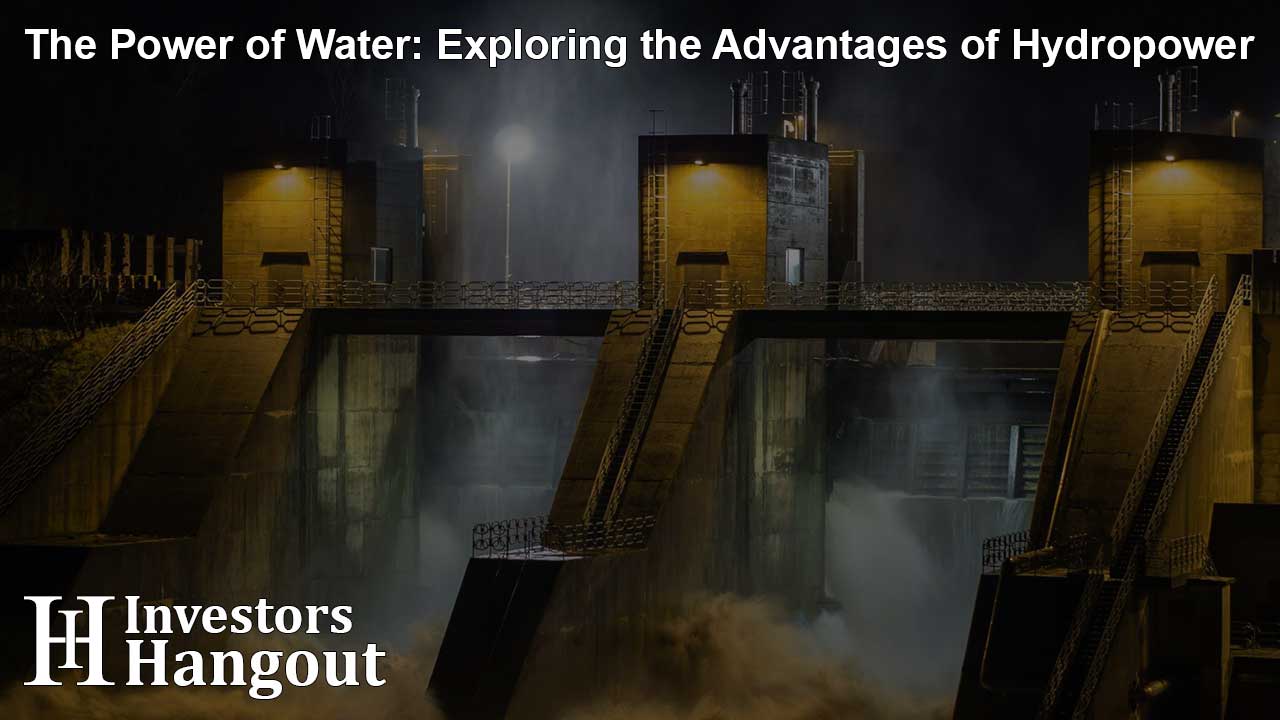The Power of Water: Exploring the Advantages of Hydropower

While solar and wind energy capture most headlines in the renewable energy sector, savvy investors are taking a closer look at hydropower: a mature, reliable asset class that's been quietly delivering consistent returns for over a century.
As the clean energy transition accelerates and grid stability becomes paramount, hydropower presents compelling investment opportunities that deserve attention from portfolio managers seeking long-term value.
Hydropower Investment: Pros and Cons at a Glance
Before diving deeper, here's what investors need to know about hydropower pros and cons:
|
Advantages |
Disadvantages |
|
50-100+ year asset lifespan |
High upfront capital ($10K-$19K per kW) |
|
Zero fuel costs, predictable margins |
Hydrological risk from climate volatility |
|
Dispatchable power commands premiums |
Geographic limitations restrict opportunities |
|
Multiple revenue streams |
Regulatory and environmental compliance costs |
|
Natural competitive moats |
Long development timelines |
Understanding this balance is crucial for proper portfolio allocation and risk assessment.
Infrastructure Built for Generational Returns
Unlike many energy investments that require replacement every 20-30 years, hydropower facilities offer extraordinary longevity. These plants routinely operate for 50 to over 100 years with proper maintenance, making them exceptional long-term infrastructure investments.
This extended lifespan allows capital costs to be amortized over decades, creating sustainable revenue streams that can outlive entire market cycles.
For investors evaluating infrastructure plays, this durability translates to predictable cash flows and reduced replacement risk, attractive qualities in an era of market volatility.
Grid Stability Creates Premium Value
Hydropower's most overlooked advantage is its ability to provide base-load power and rapid response capabilities. Unlike intermittent renewables, hydroelectric facilities can ramp production up or down within minutes, making them invaluable for grid operators managing peak demand and supply fluctuations.
This flexibility becomes increasingly valuable as more variable renewables enter the grid. Utilities and grid operators pay premiums for dispatchable power that can fill gaps when solar output decreases and wind production drops.
Pumped storage hydropower, which functions like a massive battery, offers energy storage capacity far exceeding current battery technologies, with storage durations measured in hours or days rather than minutes.
Multiple Revenue Streams Beyond Electricity
Diversification strengthens any investment thesis. Hydropower facilities don't rely solely on electricity sales:
-
Flood control services: Municipalities pay for water management capabilities that protect downstream infrastructure
-
Recreational licensing: Reservoir-based tourism generates fees from fishing, boating, and waterfront activities
-
Water use agreements: Agricultural and municipal water rights create contracted revenue streams
-
Renewable energy credits: Carbon-free generation qualifies for tradeable credits under climate policies
-
Ancillary grid services: Frequency regulation and voltage support command premium compensation
These secondary revenue sources, although rarely included in simplified project economics, contribute meaningfully to total returns and provide downside protection when electricity prices soften.
The Talent Investment Angle
The hydropower sector's maturation presents opportunities beyond direct asset ownership. As the industry modernizes aging infrastructure and integrates digital controls, demand is surging for specialized professionals.
Civil engineers, environmental specialists, and technicians with hydropower expertise command premium compensation in a market facing talent shortages.
For investors considering the broader renewable energy employment landscape, understanding hydropower career dynamics provides insight into operational costs and project execution risks.
Companies that successfully attract and retain this specialized workforce often deliver superior project outcomes and returns. Labor availability and wage inflation represent material factors in project underwriting and ongoing operational efficiency.
Capital Efficiency and Operating Economics
Once constructed, hydropower plants boast minimal operational expenses. Water, unlike natural gas or coal, doesn't require purchasing, transportation, or volatile commodity hedging. This creates highly predictable operating margins that aren't subject to fuel price shocks, a characteristic institutional investors prize during inflationary periods.
The low operational emissions profile also positions hydropower favorably under carbon pricing regimes and renewable energy credit markets. As governments worldwide implement stricter climate policies, hydropower assets may appreciate through regulatory advantages and carbon credit monetization.
Risk Considerations for Due Diligence
No investment is without risks. Prudent investors should evaluate:
-
Hydrological risk: Climate volatility affects water availability; prolonged droughts reduce output
-
Capital intensity: Large-scale projects require $10,000-$19,000 per kilowatt of installed capacity
-
Regulatory evolution: Environmental standards continue to tighten, potentially increasing compliance costs
-
Community relations: Indigenous rights and habitat preservation require ongoing stakeholder management
-
Climate adaptation: Long-term water availability patterns may shift with changing precipitation
However, these risks are largely quantifiable and manageable through proper site selection, engineering, and stakeholder engagement, standard elements of infrastructure due diligence. Geographic diversification across watersheds can mitigate hydrological concentration risk.
The Bottom Line
Hydropower may lack the glamour of newer technologies, but it offers attributes that institutional investors value: longevity, cash flow predictability, strategic importance, and scarcity.
As energy markets evolve and grid reliability becomes premium-priced, these characteristics position hydropower as a cornerstone renewable energy investment.
For portfolios seeking exposure to the energy transition with lower volatility and proven performance, hydropower deserves serious consideration, not as a speculative play, but as a foundational infrastructure asset built to deliver returns measured in decades, not quarters.
About The Author
Contact Lucas Young privately here. Or send an email with ATTN: Lucas Young as the subject to contact@investorshangout.com.
About Investors Hangout
Investors Hangout is a leading online stock forum for financial discussion and learning, offering a wide range of free tools and resources. It draws in traders of all levels, who exchange market knowledge, investigate trading tactics, and keep an eye on industry developments in real time. Featuring financial articles, stock message boards, quotes, charts, company profiles, and live news updates. Through cooperative learning and a wealth of informational resources, it helps users from novices creating their first portfolios to experts honing their techniques. Join Investors Hangout today: https://investorshangout.com/
